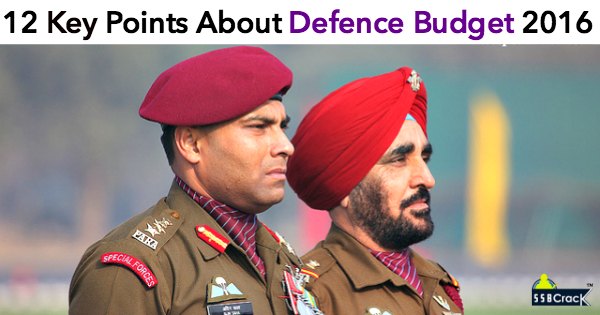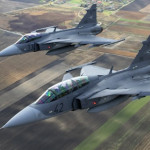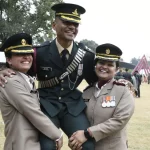Hi Warriors. Finance Minister Arun Jaitley announced the pro-poor budget for 2016-17 yesterday raising a lot of eyebrows over it.
He didn’t either make any mention of India’s defence allocation for 2016-17 in his Union Budget speech. Figures on military spending have traditionally been mentioned in the budget speech. It raised many eyebrows as to why the country’s military spending wasn’t disclosed with the spate the terrorist activities rising with each passing day.
Here are the highlights of the military budget and spending:
- The defence budget estimate for 2016-17 is Rs 3.4 trillion, about 10% more than the previous year’s budget estimate, which is broadly consistent with past increases.
- The money allocated for the military’s modernisation in 2016-17 is less than what it was last year of its GDP, with defence pensions gobbling up a large chunk of the budget by 80,000 cr.
- Defence wages and pensions have also risen this year, making even less money available for modernisation.
- The budget comes at a time when the three services are in the last stages of negotiations for multi-billion dollar deals for Rafale fighter jets, Apache, Chinook and Kamov helicopters and the M777 light weight howitzers.
- India’s defence budget had slipped to 1.74% of its gross domestic product (GDP) in 2015-16, compared to 1.78% the year before.
- Experts believe India’s military spending should be around 3% of the GDP to counter China’s rapidly growing military might.
- Defence Minister Manohar Parrikar had also buttressed on few important points in the current session of Parliament and even outside it in the last one month. That include
- The pensions for forces could be 2.2 percent of the GDP.
- Eight squadrons of light combat aircraft in next eight years.
- Siachen Glaciers would not be vacated.
- Service chiefs’ responsibility of reviewing and cancelling old and irrelevant defence purchase proposals.
- Purchase of fighter plane under ‘Make in India’ category.
- Transparent defence procurement to save money.
- The government has removed several customs duty exemptions on military equipment and stores which are to encourage local manufacturing for the same. Considering that the Defence Acquisition Council (DAC) is expected to greenlight several major products in the near term.

- Another development has been the customs duty exemption extended to private shipyards on repair of warships even though this may not provide the impetus needed for the industry but would definitely help in reducing the burden of taxes.
- In 2015-16, Rs 77,406 crore of the Rs 93,675 crore allocated to the defence ministry was earmarked for acquisition of weapon systems for the three forces. The forces have not been able to exhaust their committed liabilities this year in some cases.
- The budget papers showed that the military didn’t spend the full amount given to it last year. The revised estimate for spending for the fiscal year ending in March was Rs 2.24 lakh crore rupees.
- India has once again emerged as the world’s largest importer of arms, with Russia being the top supplier garnering 70 per cent of the Indian market. But the government of Prime Minister Narendra Modi has vowed to end the military’s dependence on imports.
To crack the AFSB and SSB interview, we recommend you to get “Let’s Crack SSB Interview” book from Amazon.
Download eBooks:
With China is expected to announce a large rise in defence spending next month, the expansion in defence budget could have been larger for India.
There are clear indicators in the budget that the government is looking to incentivize domestic value-add and improve cost competitiveness of defence manufacturing through rationalization of duties and taxes. Defence OROP (one rank one pension) will be affected from this year onwards. Additionally, the emphasis is clearly to ensure that the existing outlays for defence procurement (which are often not used completely) are effectively deployed.












